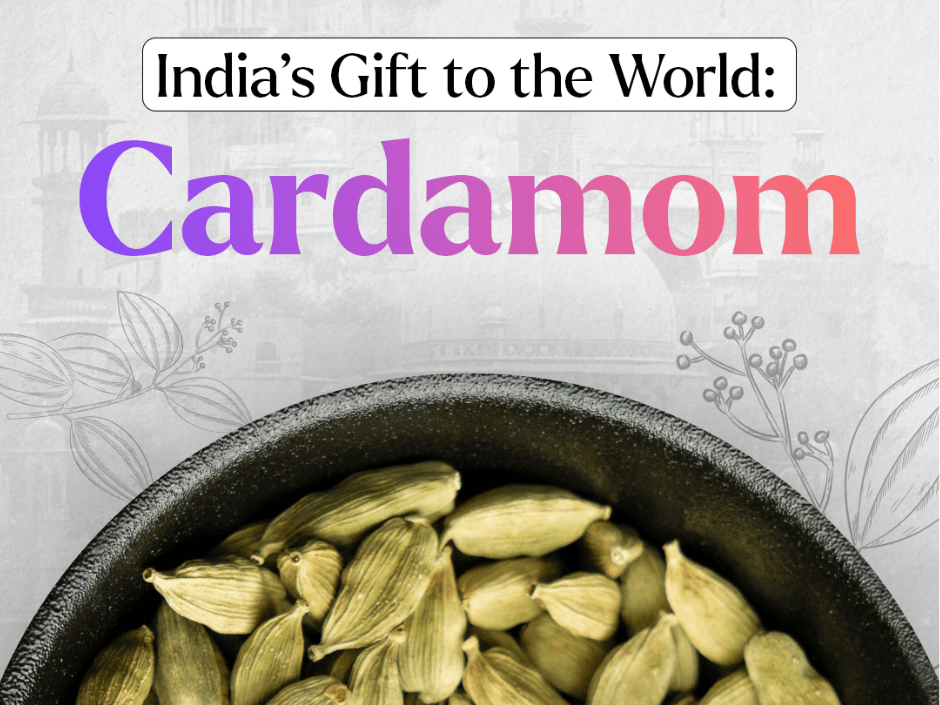Cardamom, the fragrant green pod known for its warm and slightly sweet aroma, has a history as rich as its flavor. Originating in the lush hills of southern India, this humble spice has travelled continents, shaped civilizations, and continues to hold a prominent place in both kitchens and medicine cabinets around the world.
Rooted in India: The Birthplace of Cardamom
Cardamom traces its roots to the Western Ghats of Kerala, one of the oldest spice-producing regions in the world. The tropical climate, rich soil, and forest shade made it the perfect cradle for this flavorful seed to flourish.
Known in Sanskrit as elaichi, cardamom was deeply woven into Indian culture—from Ayurvedic remedies to religious rituals and royal cuisine. Its distinct aroma made it a prized addition to curries, sweets, and even herbal teas. But its appeal wasn’t limited to just taste.
In ancient India, cardamom was valued for its medicinal properties—used to treat digestion issues, freshen breath, and relieve respiratory ailments. This made it a dual-purpose treasure, revered in both culinary and healing traditions.
Riding the Trade Winds: Cardamom in the Ancient Spice Trade
As India’s spice trade flourished, cardamom became one of its most valuable exports. Alongside pepper, cinnamon, and cloves, it sailed out of Indian ports to meet the demands of the ancient world.
Arab traders played a key role in spreading cardamom’s popularity, introducing it to the Middle East and North Africa. From there, it travelled to ancient Egypt—where it was used in perfumes, incense, and even embalming rituals.
In Greece and Rome, cardamom gained prominence as a luxury spice. Roman cookbooks mentioned it as an ingredient in savory stews and sweet sauces, and elite households used it for both cuisine and personal care.
The Medieval & Renaissance Eras: Cardamom Keeps Its Crown
Even as new empires rose and trade routes shifted, cardamom’s charm never faded. During the medieval period, it continued to be traded along the Silk Road and through maritime routes across the Arabian Sea.
By the time the Renaissance rolled in, Europe’s fascination with exotic spices had reached new heights. Cardamom featured in lavish feasts, often paired with meats, citrus, and wine reductions. Its use expanded beyond kitchens to apothecaries, where it was used in tinctures, tonics, and even breath fresheners.
A Modern-Day Super Spice
Today, cardamom is still a global favorite. In India, it remains a star ingredient in masala chai, biryanis, and mithai (sweets). In the Middle East, it flavors coffee, rice dishes, and desserts. In Scandinavia, it’s baked into pastries and buns. Its culinary versatility spans continents and cultures—but it doesn’t stop there.
Cardamom in Wellness & Aromatherapy
Modern science has reaffirmed many of cardamom’s traditional health claims. It’s recognized for aiding digestion, improving oral hygiene, reducing inflammation, and containing antioxidant properties.
Cardamom essential oil is widely used in aromatherapy to ease anxiety and boost mental clarity. Its calming fragrance makes it a popular component in teas, candles, and wellness products around the world.
Conclusion: A Seed That Crossed Civilizations
From the misty hills of Kerala to royal Roman banquets and contemporary café lattes, cardamom’s journey is nothing short of legendary. It’s a spice that has travelled across time and geography, winning hearts and tastebuds along the way.
Whether you’re sipping on a cup of cardamom tea or enjoying it in a baked treat, remember—you’re partaking in a global legacy thousands of years in the making.


